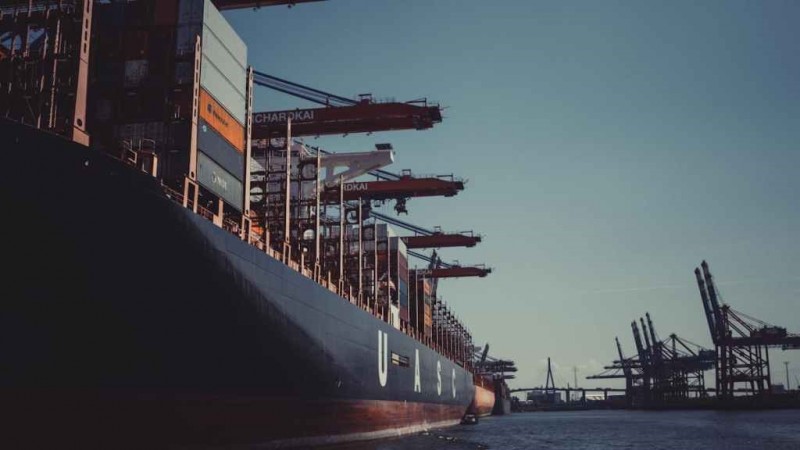
Indian economy is rapidly emerging as a global engine of resilient growth weathering various headwinds. To sustain this growth momentum, the government has been focussing on enhancing domestic manufacturing, increasing exports, and seeking a larger slice of the global value chain. Simultaneously, there is greater emphasis on exports by Micro, Small and Medium Enterprises (MSME), from the hinterland and of labour-intensive items.
This release time, an internationally accepted indicator of trade facilitation performance, is impacted by several factors, including but not limited to, infrastructure development (port efficiency or transportation network), regulatory efficiency and technology augmentation.
This significant improvement is attributable to India completing the implementation of all the provisions of the World Trade Organization’s Trade Facilitation Agreement (TFA) and going beyond the same by focusing on “TFA Plus” measures under the National Trade Facilitation Action Plan (NTFAP), which is being monitored by the National Committee on Trade Facilitation, adopting the “whole of government” approach.
While these reforms and their adoption by various stakeholders have enhanced the trading experience across Indian borders, lowering the time and cost of trading, the NTFAP target to achieve the average release time for import to less than 48 hours for seaports, ICDs, and land ports and 24 hours for Air Cargo Complexes, is yet to be achieved by the 15 Customs ports covered by NTRS.
Similarly, the export release time target of less than 24 hours for seaports, ICDs and land ports and 12 hours for Air Cargo Complexes, is still to be achieved by these leading 15 Customs ports, highlighting the need for greater focus on streamlining the export clearance processes.
In order to ensure that the benefits of international trade are reaped by larger sections of the economy, particularly the MSMEs in the hinterland, it is necessary to accord greater focus on export release time during the second generation of trade facilitation reforms.
In this regard, two insights emerging from the NTRS are crucial: Firstly, Indian exports are less concentrated at the 15 major ports, which handle about 65% of export declarations, as against about 80% of import declarations. Secondly, the time taken in logistics processes in exports as against regulatory processes, is significantly higher than in imports. Therefore, it is observed that Indian exports are much more diffused than imports and more impacted by infrastructural and logistics issues.
Given that a large number of ICDs, often located in far-flung hinterland, catering to MSMEs, play a greater role in handling exports, it is important to place greater focus on them.
The role of ICDs in promoting exports is also likely to increase on account of Foreign Trade Policy 2023 recognizing four additional ‘towns for export excellence’, namely Faridabad for apparels, Moradabad for handicrafts, Mirzapur for carpets and Varanasi for handloom and handicrafts, besides the existing 39 towns for export excellence. These export towns are catered for by ICDs, of varying size, proximity to main transport routes, volume of cargo handled and availability of regulatory personnel.
NTRS 2023 highlighted that government initiatives, referred to as “Path to Promptness”, comprising higher facilitation, trusted based Authorized Economic Operator (AEO) scheme and pre-arrival processing, have had minimal impact on reducing export release time. Put simply, the tools used to bring down import release time haven’t been successful in reducing export release time; and there is a need to identify an appropriate set of tools that would have a similar transformative impact on streamlining export clearance.
In the case of ICDs, there are additional issues that go beyond documentary clearance, such as the uncertainty of hinterland connectivity, train frequency or road transport for transit to the gateway port, the efficiency of single vs. double-decker train enroute to the gateway port, and logistics processes at the local as well as gateway ports. Another peculiar challenge is with respect to the consolidation of small consignments by MSME exporters that come as ‘Less than container load’ and need aggregation into a ‘Full container load’.
Recognising that various ICDs spread across the country, provide an easy gateway for exporters, including MSMEs, the beneficial impact of the Sagarmala Programme and Dedicated Freight Corridor aimed at improving the connectivity of hinterland with the ports, need to be studied to obtain full benefit of the same.
In view of the above, it is felt that a detailed quantitative performance assessment of active ICDs will lay down the benchmark against which optimality of efficiency at existing and new ICDs, can be measured and assessed, with sharing of good practices between these dry ports. Given that many of the dry ports are owned and managed by private companies and cater to smaller businesses in the hinterland, such a study would trigger a competitive spirit among the private companies to achieve higher operational efficiency and help make further progress towards improving the export competitiveness of MSMEs in India.
Source: https://www.financialexpress.com/business/sme/improved-export-competitiveness-of-msmes-demands-greater-focus-on-dry-ports-in-hinterland/3404393/

